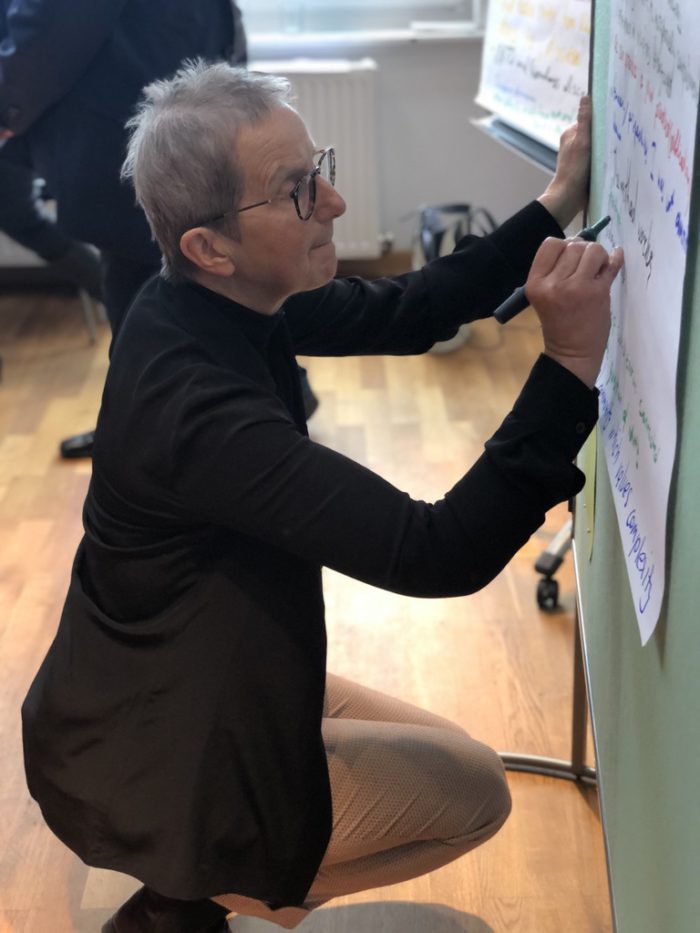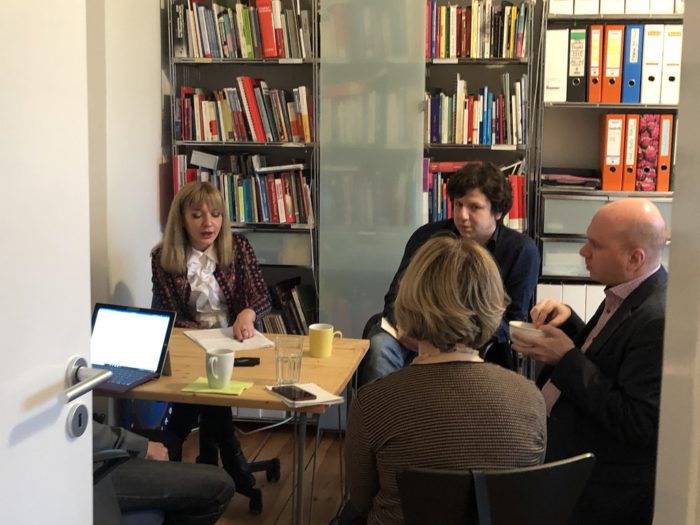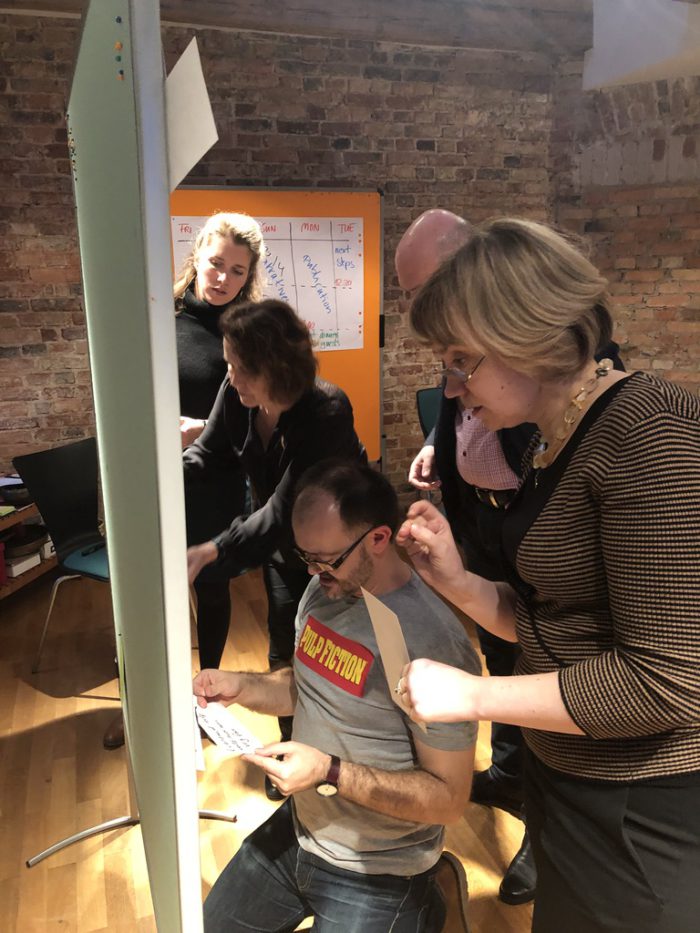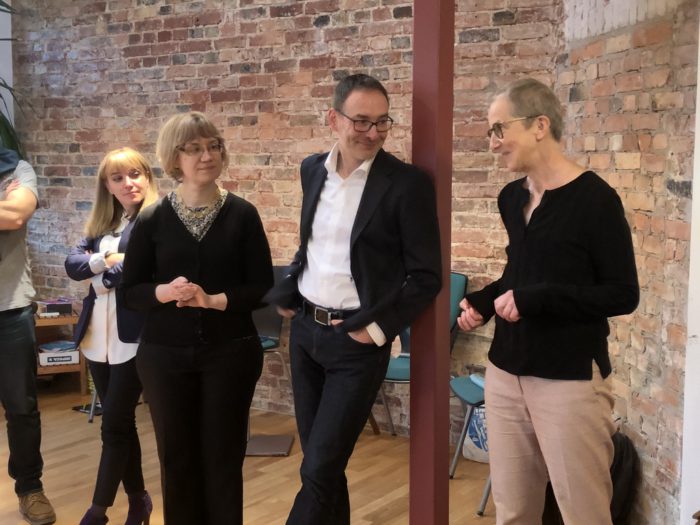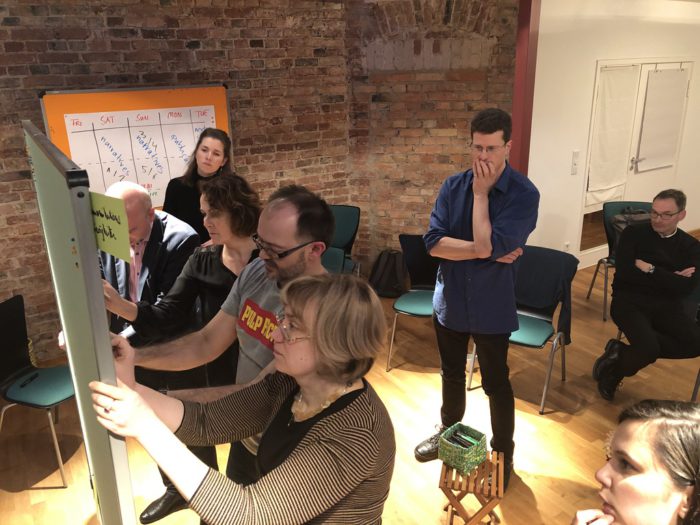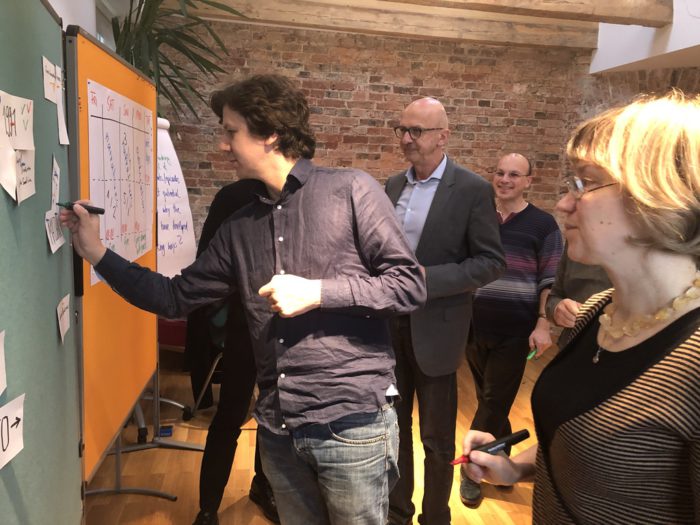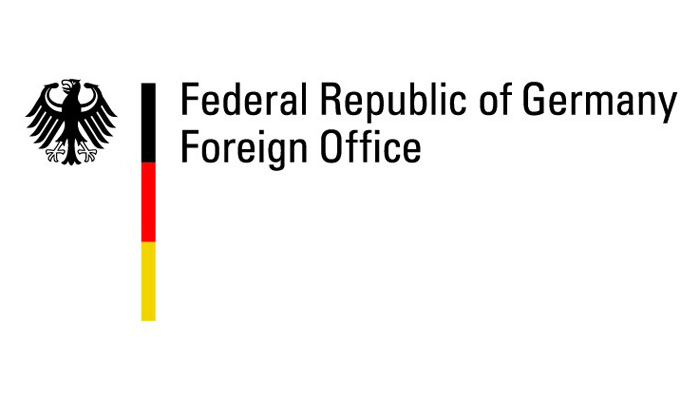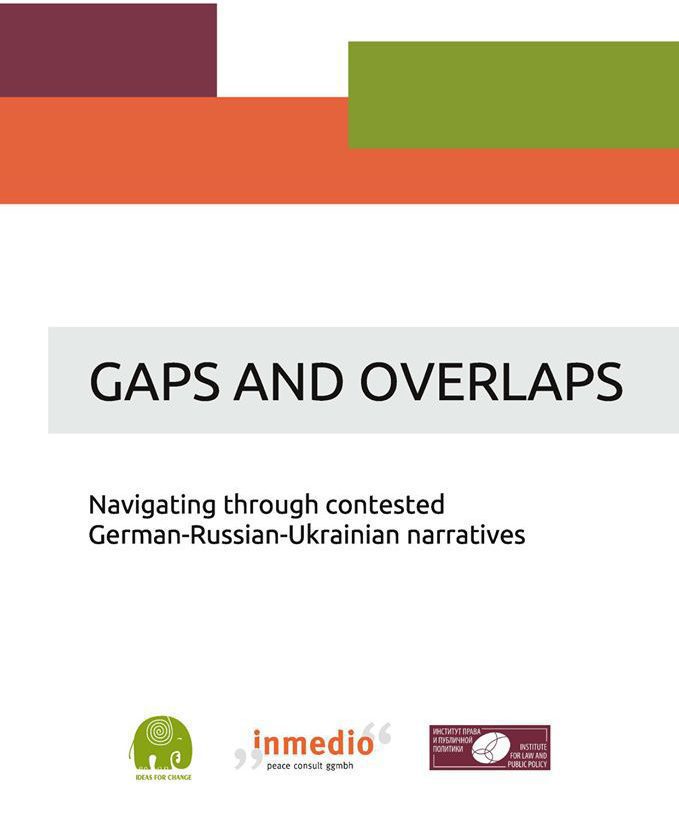
The joint work of more than twenty experts from academia, think tanks and NGOs, as well as journalists, resulted in the publication “Gaps and Overlaps: Navigating through contested German-Russian-Ukrainian narratives” in January 2020.
This consensus paper shows the results of the respective group discussions reconstructing the narratives on the following topics: Holodomor/the Great Famine of the 1930s and its impact on the idea of Ukrainian independence; 1991 – different perceptions on the dissolution of the Soviet Union and Ukrainian independence; attempts and failures of cooperation with NATO; and competing narratives on Euromaidan, Crimea, and Donbas.
The aim is certainly not to agree on one narrative. Rather, the aim is to help the societies concerned to better understand the differences between the existing narratives. This approach follows a rather long-term strategy. It does not provide a quick solution and is not meant to replace crisis management and the addressing of immediate problems. Instead, an in-depth understanding of the narratives can pave the way for more effective communication on possible sustainable solutions, which sooner or later must be found.
The first chapter, on methodology, briefly outlines the main aspects of the specific approach to narrative work applied in this project, the Mediative Dialogue Approach. The subsequent chapters ordered chronologically according to their historical reference points, outline the gaps and overlaps between the different narratives.
Holodomor or the Great Famine of 1932/33 is one of the most controversial events in Ukrainian/ Soviet history. Ukrainian and Russian narratives as well as a German “non-narrative” which frame it as genocide, tragedy, a crime against humanity or propaganda, respectively, are outlined in Chapter 2.
The dissolution of the Soviet Union and Ukrainian independence in 1991 trigger very strong and often contradicting emotions and political discussions in Ukraine and Russia because they are directly linked with the existential topic of identity. Paradoxically, this underlying issue of identity could be quite easily understood empathetically by both sides, as described in Chapter 3.
Attempts and failures of cooperation with NATO are at the heart of the Russian mainstream perception of being “encircled” and the Ukrainian frustration at “having missed the last train.” Three main narratives, from Ukraine, Russia, and Germany, are discussed in Chapter 4.
Gaps and overlaps between three main narratives regarding the Euromaidan of 2013/14, Maidan as a revolution of dignity, Maidan as a Western plot and Maidan as a fascist coup, are analyzed in Chapter 5.
Our discussion about Crimea and Donbas, rather than analyzing the conflicting interpretations of what happened, how and why, focused on developing an overview of the opposing approaches to conflict resolution and their respective patterns of argument. These are presented in Chapter 6.
The Ukrainian translation and a short explainer video will follow, soon.
About the project
The project “Joint History Textbook – 2090” was designed and implemented by the Centre of Public Initiatives “Ideas for Change” (Kyiv), inmedio peace consult gGmbH (Berlin) and the Institute for Law and Public Policy, ILPP (Moscow) and funded by the German Federal Foreign Office.
